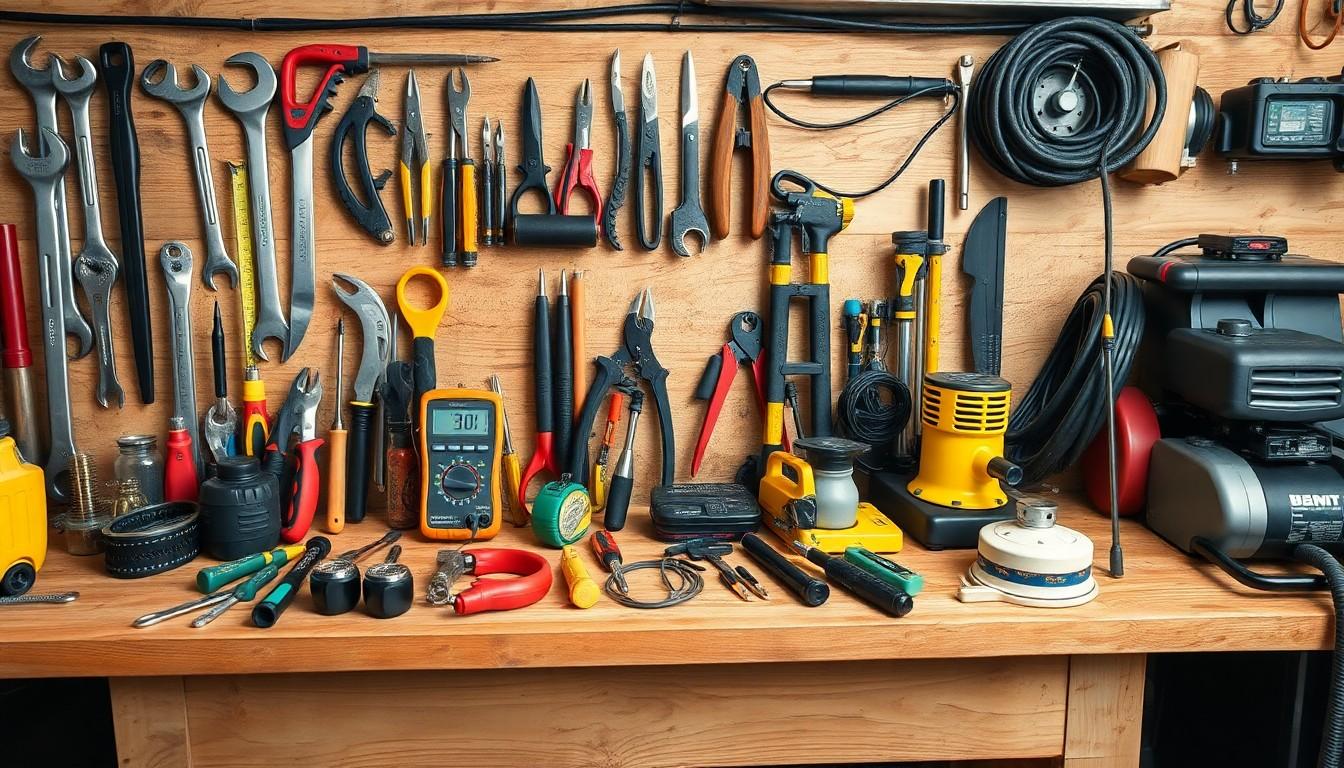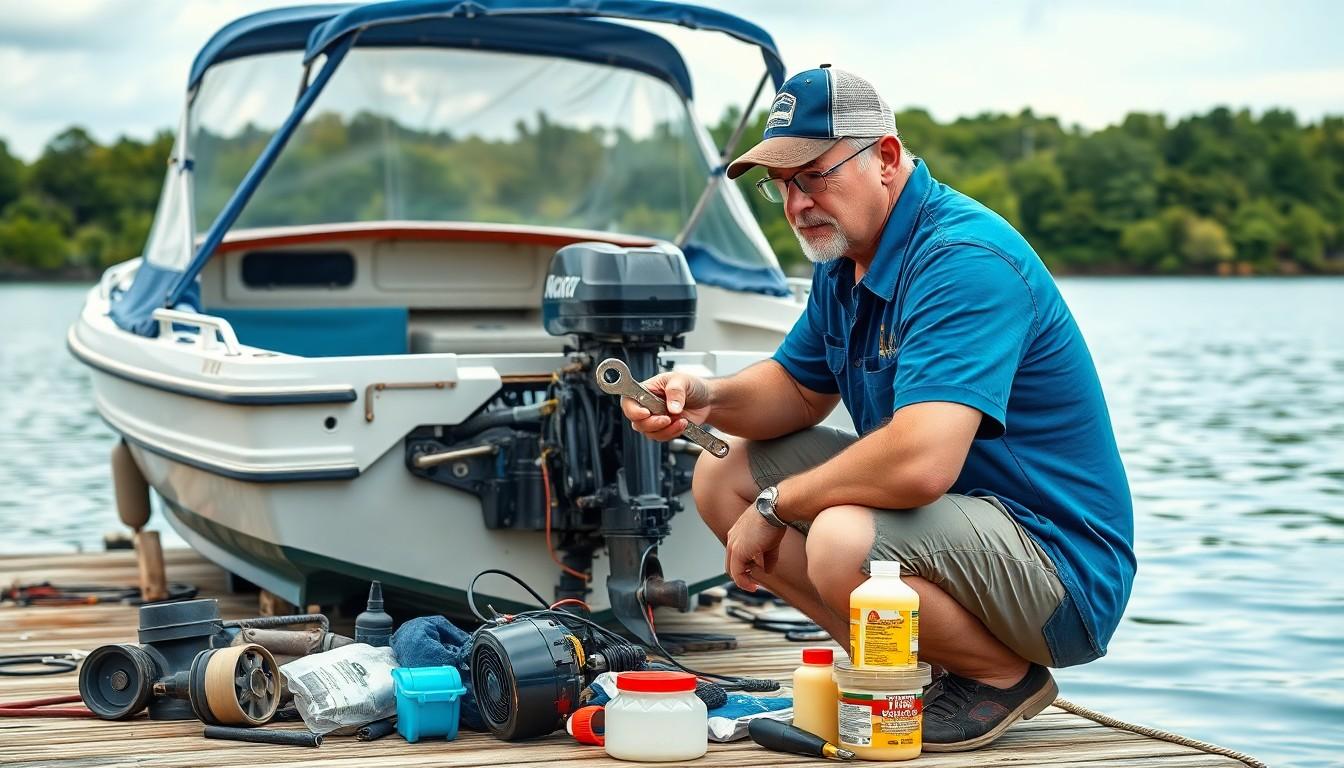Owning a boat is like having a passport to adventure, but neglecting maintenance can turn that dream into a sinking ship. It’s not just about looking good on the water; it’s about keeping your vessel shipshape and Bristol fashion. With a little DIY know-how, you can save some cash and avoid the dreaded call to the repair shop—where the prices can make even a seasoned sailor weep.
DIY Boat Maintenance Tips
DIY boat maintenance plays a crucial role in preserving a vessel’s prime condition. Regular upkeep enhances the boat’s performance and ensures safety on the water. Effectively maintaining a boat reduces the risk of equipment failure, which could lead to dangerous situations while navigating.
Owners often find that by learning basic maintenance tasks, they can save significantly on professional repair costs. Tasks such as cleaning, checking for leaks, and inspecting the engine are manageable. Additionally, addressing small issues early prevents them from escalating into costly repairs.
Proper maintenance also helps maintain the vessel’s resale value. Boats in excellent condition attract buyers and command higher prices. Regularly performing maintenance tasks shows prospective buyers the owner’s diligence, making the boat more appealing.
DIY boat maintenance fosters a deeper connection between the owner and the vessel. Understanding how the boat operates helps owners manage their craft more confidently. Through hands-on experience, they develop skills that enhance their boating knowledge.
Setting aside time for regular inspections and maintenance strengthens the owner’s ability to spot potential problems. Consistent attention to detail contributes to a safe and enjoyable boating experience. Ultimately, investing time in DIY maintenance proves valuable for both the owner and the boat itself.
Essential Tools For Boat Maintenance

Having the right tools simplifies boat maintenance tasks and enhances the overall upkeep process. Essential tools range from basic hand tools to specialized equipment.
Basic Tools You Need
- Wrenches: Adjustable wrenches assist in loosening and tightening various nuts and bolts.
- Screwdrivers: Phillips and flathead screwdrivers cover most fasteners encountered during maintenance.
- Pliers: Needle-nose pliers help with grasping small items in tight spaces.
- Measuring Tape: A reliable measuring tape enables precise measurements for repairs or modifications.
- Cutting Tools: Utility knives or wire cutters effectively tackle ropes and wires.
These tools facilitate regular maintenance tasks, allowing boat owners to address minor issues before they escalate.
Advanced Tools For Detailed Work
- Multimeter: This device checks electrical systems and helps diagnose faults in wiring.
- Engine Diagnostics Tool: It connects to the engine to read error codes and monitor performance.
- Paint Sprayer: A paint sprayer ensures an even coat when refurbishing or refreshing the vessel’s exterior.
- Pressure Washer: Using a pressure washer removes grime and marine growth from the hull effectively.
- Sanding Machine: An electric sander smooths out surfaces for refinishing and repairs.
Advanced tools support detailed inspections and repairs, ensuring long-lasting performance and safety for the vessel.
Common Boat Maintenance Tasks
Routine boat maintenance ensures a vessel remains in peak condition. Engaging in common tasks prevents costly repairs and enhances safety on the water.
Cleaning Your Boat
Cleaning a boat regularly removes dirt and grime that can damage surfaces. Start by rinsing the exterior with fresh water to eliminate salt and debris. Use marine-safe soap to wash the hull and deck, paying close attention to non-slip surfaces. For the interior, vacuuming and wiping down surfaces keeps the cabin fresh. Protecting stainless steel fittings with a quality polish prevents corrosion. Lastly, regular cleaning preserves the overall aesthetics and extends the life of materials.
Inspecting The Hull
Inspecting the hull is crucial for identifying potential issues before they escalate. Begin by examining for cracks, blisters, or signs of delamination. Check the keel and transom for any signs of wear or damage. Using a flashlight during inspections helps reveal hidden problems. Inspecting through-hull fittings and seams can prevent leaks. Regular checks enhance the vessel’s overall structural integrity and safety while on the water.
Maintaining The Engine
Maintaining the engine is vital for a reliable boating experience. Start by checking the oil and changing it according to the manufacturer’s guidelines. Replace the oil filter at each change for optimal performance. Inspect belts and hoses for cracks, ensuring they function correctly. Cleaning or replacing fuel filters regularly enhances fuel efficiency. A well-maintained engine prevents unexpected breakdowns and extends the life of the vessel’s crucial components.
Seasonal Maintenance Tips
Seasonal maintenance significantly contributes to a boat’s longevity and performance. Owners can target specific tasks in spring and winter, ensuring their vessels remain in top condition.
Spring Preparation
Spring preparation involves several critical tasks. Start by cleaning the boat thoroughly, removing dirt and mildew that accumulated during winter storage. Checking the battery and recharging if necessary ensures reliable starts. Inspecting the hull for damage and applying antifouling paint protects against growth and wear. Changing the oil and filters in the engine supports smooth operations throughout the season. A thorough safety check of life jackets and emergency gear also proves essential. Completing these tasks prepares the boat for safe and enjoyable adventures on the water.
Winterization Procedures
Winterization procedures protect the boat during the colder months. Begin by thoroughly cleaning and drying the interior and exterior to prevent mold. Draining water from systems like the engine and plumbing ensures freeze-related damage doesn’t occur. Adding antifreeze to relevant systems safeguards against freezing temperatures. Removing the battery and storing it in a warm place helps maintain its lifespan. Covers should secure the boat well, protecting it from snow and ice. Following these procedures minimizes costly repairs and retains the boat’s integrity during winter months.
Investing time in DIY boat maintenance pays off in numerous ways. It not only enhances the vessel’s performance but also ensures safety on the water. By mastering basic maintenance tasks and utilizing the right tools, boat owners can prevent small issues from turning into costly repairs.
Regular upkeep fosters a deeper connection with the boat and increases confidence in handling it. Moreover, maintaining the boat’s condition helps preserve its resale value, making it a smart financial decision. With the right approach and commitment to maintenance, every boating adventure can be enjoyable and worry-free.

